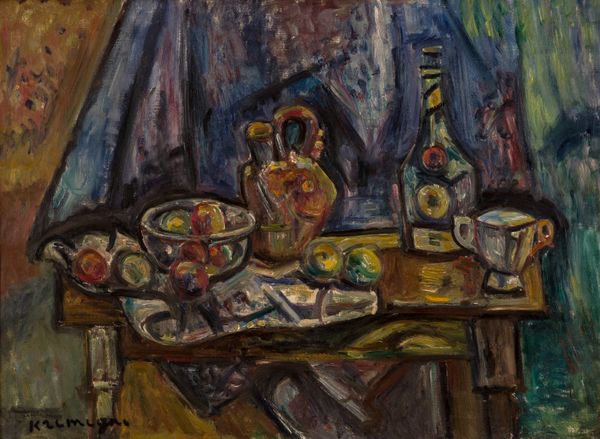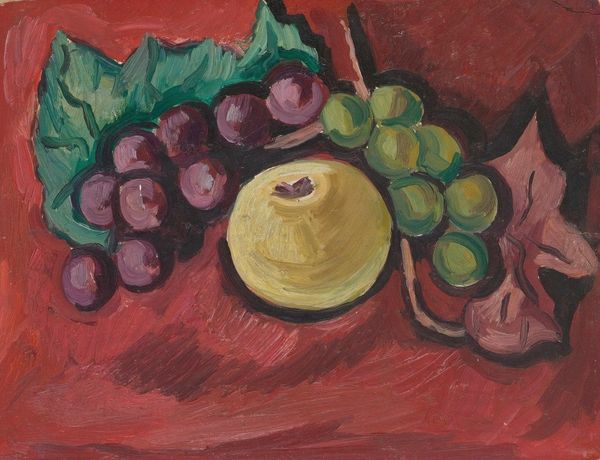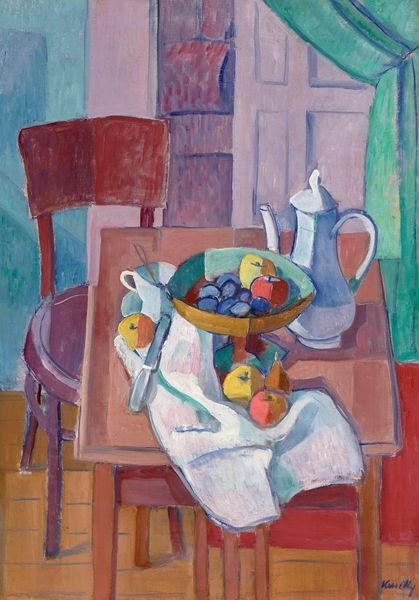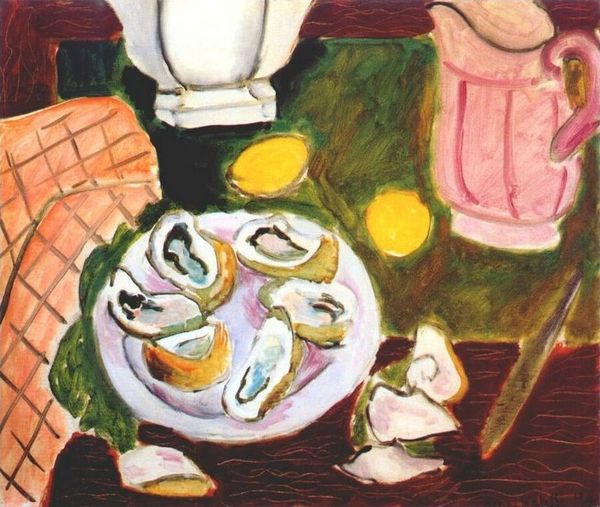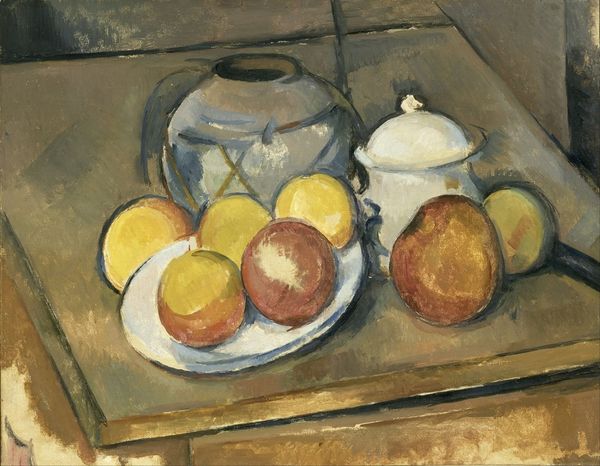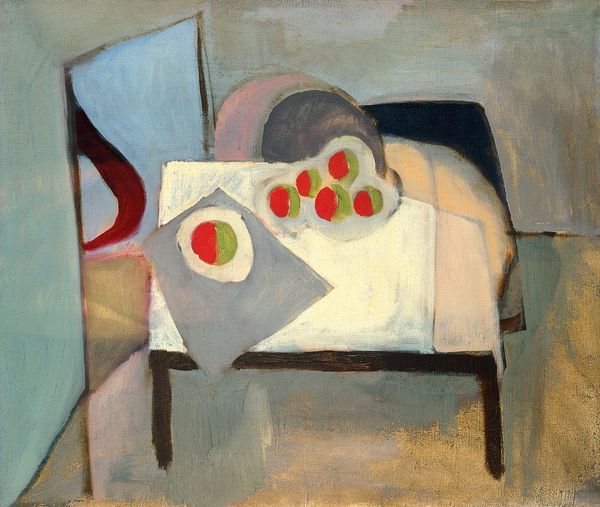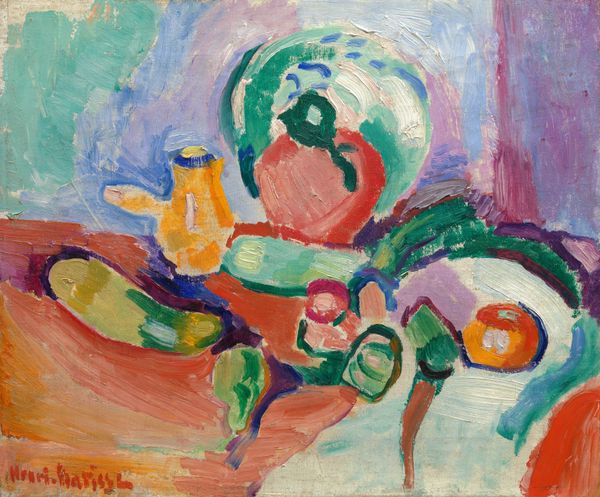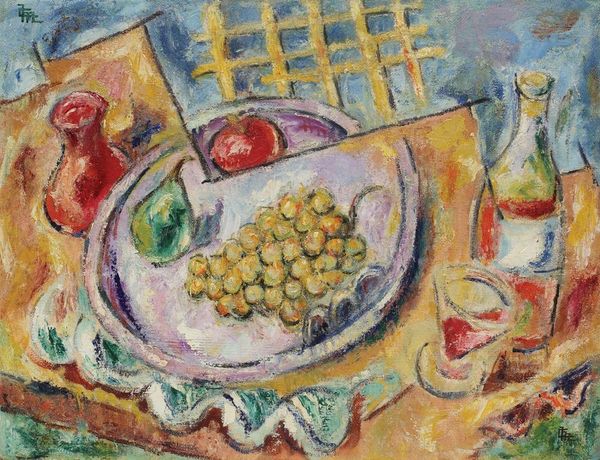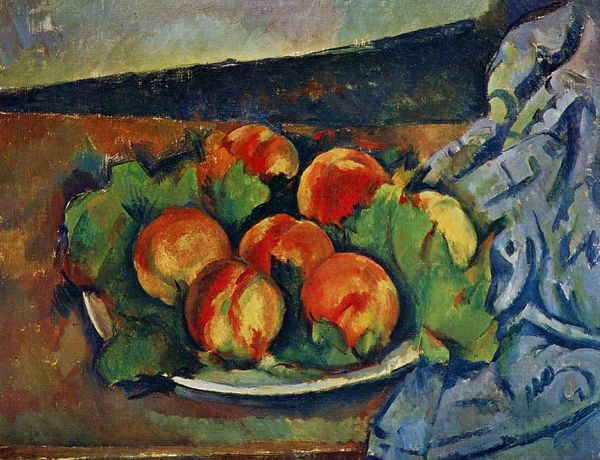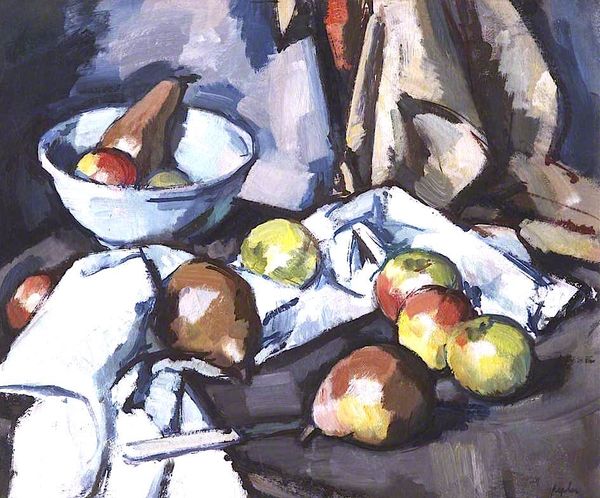
oil-paint
#
oil-paint
#
abstract
#
oil painting
#
expressionism
#
abstraction
#
modernism
Copyright: Public Domain: Artvee
Editor: This is Marsden Hartley's "Still Life No. 2," painted between 1921 and 1923 using oil paint. It's a moody still life; the dark background and somewhat muted colors give it a contemplative feel. The arrangement is simple but the brushwork is really expressive. How do you interpret this work, given Hartley's personal and historical context? Curator: Hartley's work here exists within a broader narrative of modernist artists grappling with representation after World War I. Consider the rise of abstraction as a response to trauma – a breaking down of form mirroring a shattering of social and political order. How might Hartley's identity as a gay man, living in a time of intense social repression, influence his approach to the traditional still life genre? Does this deconstruction offer a queer reading? Editor: That’s a compelling point. The disruption of typical still life conventions feels almost defiant, like he's rejecting the traditional, heteronormative view of domestic life. The colors and skewed perspectives contribute to that sense of unease. Do you think this reading extends into his use of specific objects? Curator: Absolutely. We can analyze the symbolic potential of these objects: fruit, often coded as feminine or associated with abundance and fertility, are here presented in a way that resists those traditional readings. They seem almost austere. How might this "austerity" function within Hartley's artistic vocabulary? Editor: Perhaps it’s a rejection of those easy, traditional associations? The objects are there, but their meanings are disrupted and reconfigured. This piece makes me think about how abstraction allowed artists like Hartley to explore identity and sexuality in coded ways. Curator: Exactly. By fracturing the image, Hartley also fractures expectations, challenging the viewer to look beyond surface appearances. What seemed like a simple still life actually reveals itself as a complex statement about identity, representation, and the politics of seeing. Editor: I'll never look at a bowl of fruit the same way again. Thanks, this was really eye-opening. Curator: My pleasure. Considering art in its social and political context allows us to see its true radical power.
Comments
No comments
Be the first to comment and join the conversation on the ultimate creative platform.
